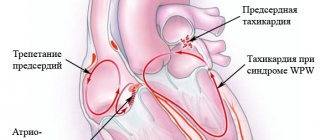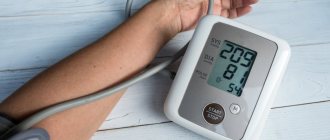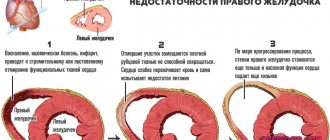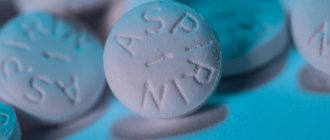What is arterial hypertension and the causes of its occurrence?
Arterial hypertension is a pathological disorder in the functioning of the cardiac system. It can be short-term (under the influence of a strong emotional stimulus) or be a consequence of some disease. As you know, blood pressure is divided into: systolic (upper) and diastolic (lower). In some cases, the patient has a high systolic with a normal diastolic, and vice versa.
In order to more accurately determine which variant of the onset of arterial hypertension is present, the following characteristics are given:
- The blood pressure is normal if the tonometer shows 120/80.
- The prehypertensive stage indicates blood pressure levels up to 140/99.
- 1 degree of high blood pressure – 140/90.
- Stage 2 is characterized by 160/100 and above.
In such a situation, you need to know how to behave in such a situation, what tests you need to take, and what treatment is necessary.
Laboratory diagnostic methods
Many people ask: what tests should be taken for severe hypertension. The patient is given a blood test that can detect renal anemia. Creatinine and GFR can be used to check kidney function. Potassium is a source of information if Conn's syndrome is suspected. It is also recommended to measure cholesterol, triglycerides and glucose to determine the risk of developing atherosclerosis. Elevated LDL and decreased HDL can increase the risk of fatal complications and the incidence of hypertension.
HDL
To exclude endocrine hypertension, T3, T4, TSH, aldosterone and renin can be measured. Urine may also be tested. Microalbuminuria can be the first sign of vascular damage. Determining glucose levels is necessary to investigate possible diabetes. Nitrite may provide information about a urinary tract infection. Catecholamines in combination with very high diastolic blood pressure (> 110 mm Hg) indicate pheochromocytoma.
Symptoms
Depending on the severity and individual characteristics, symptoms can be expressed as follows:
- increased weakness and weakness;
- periodic pain in the occipital region of the head;
- decreased performance and concentration;
- a feeling of paresthesia or slight numbness in the fingertips;
- dizziness and lightheadedness;
- tachycardia and shortness of breath;
- chest pain;
- tinnitus, feeling of deafness;
- increased excitability, feeling of fear;
- burst capillaries in the eyeballs;
- red facial skin, hot flashes;
- fatigue and shortness of breath even with minimal physical activity.
If your health worsens or you feel anxious due to the symptoms you are experiencing, you should consult a doctor for a diagnosis. There, based on the data obtained, the doctor will be able to draw up an adequate treatment regimen aimed at eliminating the main cause of arterial hypertension, as well as prescribe pills to temporarily reduce blood pressure when its levels increase.
Clinical researches
Research methods for hypertension require preliminary preparation of the patient. This way you can get the full picture. To do this, a person must remain at rest for at least 15 minutes. In the evening, a person should not eat foods that have a stimulating effect on the nervous system; it is advisable not to have dinner or breakfast at all. Differential diagnosis of hypertension allows you to determine the condition of the organs that suffer when blood pressure increases.
The blood test should only be taken on an empty stomach. The substantiation of the diagnosis will be determined not only by clinical tests and examinations, but also by complaints, which the doctor must listen carefully to.
What tests need to be taken?
Tests and diagnostics are necessary to identify the cause that triggered the development of arterial hypertension. A comprehensive examination will help you make a correct diagnosis and avoid adverse consequences such as decreased vision, kidney problems, hypertensive crisis, stroke and other complications.
When visiting a doctor with high blood pressure, the patient undergoes the following examination:
- History taking and clinical examination.
- Pressure measurement
- Lab tests.
- Echocardiography
- Electrocardiography.
- Ultrasound examination of the kidneys.
- Other diagnostic methods.
In any case, before starting treatment for hypertension, you must undergo urine and blood tests to check the state of your kidneys, determine the amount of cholesterol, assess the “functionality” of the thyroid gland and find out whether there are cardiovascular risks.
Diagnosis of severe forms of hypertension
Hypertensive crisis is a sharp increase in blood pressure above 180/120 mm Hg. Often patients have systolic values greater than 230 mm Hg. At the same time, signs of organ damage such as angina, shortness of breath and neurological deficits are called malignant hypertension.
The cause of a hypertensive crisis is usually the withdrawal of antihypertensive drugs. But the cause may be emotional stress, kidney disease or acute stenosis, as well as renal artery embolism.
Typical symptoms include headache, nosebleeds, dizziness and hand tremors. A crisis may also remain asymptomatic or lead to a stroke.
It is important to lower blood pressure slowly, while systolic blood pressure should be reduced by a maximum of a quarter in the first two hours to ensure adequate organ perfusion. Therapy can be administered by a paramedic with nitroglycerin in the form of an aerosol. Then you need to administer intravenously uradipil and an α1-adrenergic receptor antagonist. Clonidine is used less frequently.
Uradipil
Important! The European Society of Hypertension defines a hypertensive crisis as a sudden increase in blood pressure >180/120 mmHg. For a child, the normal values in the tables are slightly different.
Examination of the patient and measurement of blood pressure
As you know, any diagnosis and treatment begins in the doctor’s office. If you have arterial hypertension, you should first consult a physician.
History taking and examination
At the appointment, the doctor identifies the presence of chronic diseases, asks about complaints, as well as hereditary predisposition. Also during the examination, the following examination methods are carried out:
- percussion;
- auscultation of the heart and lungs;
- palpation;
- The cardiovascular system is examined for the presence of murmurs.
With arterial hypertension, it is possible to hear 2 sounds above the aorta.
Pressure measurement
A mandatory step in the doctor's office if you complain of hypertension is to measure your blood pressure. It must be carried out on both hands with an interval of 3-4 minutes three times.
The cuff should be the size of the patient and fit snugly to the arm. It is also recommended that patients keep a blood pressure diary, where they can record morning and evening readings. In the future, this will help the doctor to adequately assess the patient’s condition.
Lab tests
Laboratory tests that every hypertensive patient needs to undergo are important in medical practice. To understand and understand the problem, the patient is asked to take a urine and blood test.
General blood analysis
This method is considered one of the most important and is widely used to identify most diseases. Changes in the indicators are non-specific, but they reflect the essence of all the changes occurring in the body of a hypertensive patient.
The study is carried out with a mandatory assessment of formed elements (leukocytes, platelets, erythrocytes). Also an important indicator is protein, the concentration of which depends on the breakdown and synthesis of globulins and albumins (the two main protein fractions). The functional features of proteins are very multifaceted:
- maintain oncotic pressure while maintaining BCC (circulating blood volume);
- participate in blood clotting;
- retain and prevent water from leaving the bloodstream;
- provide a transport function (connect with cholesterol, drugs, etc. and transfer them to tissue cells);
- are part of enzymes, hormones and other substances;
- ensure constant blood pH;
- participate in immune processes, etc.
As you can see, their role is very extensive and any deviation from normal indicators can seriously affect health. An increase in protein may indicate diabetes mellitus or kidney pathology, and as is known in arterial hypertension, these diseases are included in the risk factors. To get a reliable result, you need to take the test in the morning on an empty stomach after an eight-hour fast.
Rehberg test analysis
Using this method, it becomes possible to find out about the cleansing ability of the kidneys. During normal operation, this organ filters creatinine, which can be seen in a certain amount when passing urine.
Deviations from the norm are considered not physiological and may indicate the following problems:
- A low level indicates renal failure.
- Increased levels can be observed in diabetes mellitus, kidney inflammation and arterial hypertension.
Be that as it may, all of these conditions are threatening and require careful examination. Proper preparation for analysis includes:
- exclusion of taking medications that affect the test results 2 weeks before taking the material (check with your doctor which ones);
- following a diet 2 days before the test (excluding spicy, salty, meat, sweet, coffee, alcohol);
- A urine test is taken on an empty stomach after an eight-hour fast.
Normal indicators depend on the weight and height of the patient, so they are calculated individually.
Glycolyzed hemoglobin
Glycolyzed hemoglobin is the most important indicator in the diagnosis of diabetes mellitus. Everyone knows what hemoglobin is - it is a complex protein involved in the transfer of oxygen to organs and tissues. What is glycosylated hemoglobin? Essentially this is a reaction between hemoglobin and glucose.
When taking the test, the rate of binding of glucose and hemoglobin is revealed. The higher this rate, the higher the glycemic level. This examination method allows you to identify the level of glycemia over the last 3 months and calculate its average daily values. As is known, against the background of diabetes mellitus, arterial hypertension may appear, so this analysis is necessary to determine the cause.
Blood tests for hormones
This is necessary in order to check the functional characteristics of the thyroid gland. Here are the tests you need to take:
- thyroid-stimulating hormone;
- T4 free;
- T3 general;
- T4 general;
- T3 is free.
This needs to be done for the following reasons:
- in the absence of excess weight and the presence of hypertension;
- when losing weight on a low-carbohydrate diet and not lowering blood pressure;
- for signs of hypothyroidism or hyperthyroidism.
If problems with the thyroid gland are detected, you should contact an endocrinologist.
Cholesterol tests
Cholesterol enters the body with food, but is mainly produced in the liver. It is a component of cell membranes. Its excessive accumulation is considered a risk factor for the occurrence of IHD (coronary heart disease). A high concentration is an indicator over 6.2 mmol/l. In case of hypertension, it is necessary to take this test, and best of all in combination with the determination of cholesterol, LDL, HDL and triglycerides.
Creatinine
It plays an important role in the energy metabolism of muscle, as well as other tissues. Its concentration in the blood depends on the degree of excretion and formation. It is removed from the body by the kidneys, so its amount is used to study the performance of this organ. Many people think that the higher its concentration, the worse the organ functions. In fact, its level depends on muscle mass. The more it is, the more creatinine.
However, an increase in creatine levels in the blood may indicate kidney failure and diabetes. The procedure is carried out in the morning on an empty stomach.
Microalbumin
Using this analysis, it becomes possible to evaluate the concentration of one of the lowest molecular weight proteins in urine. In normal terms, this figure is very small. With an increase in concentration, one can judge the damage to the glomerular membrane and an increase in its permeability.
This is especially true for people suffering from diabetes. The appearance of elevated levels of microalbumin in a urine test most often indicates diabetic nephropathy and possible chronic renal failure. Also, an increased amount may appear with arterial hypertension.
For analysis, a certain portion of urine collected over 24 hours. Normally, the concentration should be no higher than 30 mg/day.
Urea
This is the end product of protein breakdown, which is removed from the body by glomerular filtration. In a pathological condition, the concentration of urea depends on the process of its formation and excretion. If the excretory system of the kidneys is disrupted, hypertension may appear, and urea levels will increase.
Glomerular filtration rate
Under this concept, it is customary to distinguish the volume of primary urine formation in 1 unit of time. If the indicators are normal, then the functioning of the kidneys is physiological, but if it is reduced, then this indicates an existing pathology.
Many may wonder how kidney disease and hypertension can be related? The fact is that high blood pressure can cause complications on the kidneys or, conversely, kidney disorders can result in increased blood pressure. Therefore, it is very important to monitor the work of this body.
What additional research methods are prescribed?
They are necessary for a more accurate assessment of the patient’s condition and making a correct diagnosis. If the laboratory examination method is not enough, the doctor may ask you to undergo the following diagnostics:
- Electrocardiography. A common method for studying patients with cardiovascular pathologies. It is especially often prescribed to patients over 45 years of age. Using this method, it is possible to identify signs of ischemia during a hypertensive crisis and myocardial hypertrophy. This is especially true if high blood pressure has been bothering you for a long time.
- Echocardiography. You can find out the size of the heart, aorta, and hemodynamic state. Depending on the stage of the disease in the patient, the normal values also change.
- Fundus examination. Chronic hypertension can cause spasm of small arteries, which after some time results in the appearance of retinopathy. With grade 3 or 4 of this disease, blindness may occur due to complicated hypertension.
- Ultrasound of the kidneys. Kidney screening for hypertension is important. The diagnosis looks at the tissue structure and size of the organ.
In some cases, increased blood pressure in women may indicate the onset of pregnancy. Therefore, in this case, it is recommended to take the test.
Additional examinations as prescribed by a doctor
Very often, hypertension is asymptomatic, which is the main threat to the health of the heart, blood vessels, the normal functioning of organs and systems, and the life of the patient. If a malfunction of any organ affected by hypertension is detected, additional examinations are prescribed:
- Doppler ultrasound examination of renal vessels - study of blood flow through the arteries, the presence of blocked areas - occlusions.
- Vascular rheoencephalography tracks the path of blood to the brain and its blood supply.
- Vascular angiography is a study of the diameter of the walls of the arteries.
- Examination by an ophthalmologist - study of the condition of the optic nerve and fundus of the eye.
- Ultrasound of the arteries - the condition of the vessel walls, the presence of plaques and blood clots.
- A chest x-ray assesses the condition of the aorta, the size of the heart chambers, and excludes lung pathologies.
- Ultrasound of the pancreas and thyroid gland - the general condition of these organs is assessed.
- In addition, a patient with hypertension is offered a test to determine hormonal levels .
In conclusion, it should be said that modern diagnostic centers have a sufficient base and the latest equipment, allowing not only to identify hypertension in the early stages, but also to receive qualified assistance from experienced specialists.
What are the ways to quickly reduce hypertension?
When the mark on the tonometer goes off scale and indicates the presence of high blood pressure, the first thing a person does to quickly reduce it is to take medication. In this case, antihypertensive drugs may help.
In addition to treatment with tablets, you can also use an effective method of action to lower blood pressure. Here are some simple recommendations:
- The first thing you need to do is calm down and take a deep breath, then exhale slowly. Next you need to tuck your stomach in and hold your breath for 3-4 seconds. And repeat this event up to 4 times.
- The next step is to rub your earlobe for 3 minutes, this will reduce the pressure.
- Using stroking or rubbing movements, you can try to massage the head, collar area, neck or surface of the chest.
- Prepare a vitamin drink from 1 glass of mineral water, into which you need to squeeze half a lemon and add 1 tsp. honey
- Take a warm bath of water and add a little salt to it, lie down for 10-15 minutes.
- Take a walk in the fresh air.
This will help lower your blood pressure somewhat, if you don't have medication on hand.
Collection of complaints, hereditary and life history
An increase in blood pressure in the early stages is asymptomatic and is detected during a random examination. When the disease has been going on for some time, signs of target organ damage appear. At first, the changes are reversible (since only the function is disrupted), then it becomes impossible to reverse them: the walls of the blood vessels undergo restructuring, and the structure of the tissues of the blood-supplying organ changes.
Signs of target organ damage
If arterial hypertension has caused functional or structural changes in the vascular wall in the periphery or in centrally located organs, this will lead to the appearance of clinical symptoms.
- Brain damage is manifested by the following symptoms:
- headache is one of the first complaints at the prehospital stage;
- dizziness;
- transient ischemic attacks (cloudness of consciousness up to fainting);
- disorders of the sensory function of nerve endings (numbness, paresthesia);
- movement disorders (transient or stable loss of muscle control);
- to an extreme extent - signs of stroke (circulatory disorders of the brain).
- The pathological effect of hypertension on the heart is manifested:
- pain behind the sternum as a result of myocardial ischemia (as an option - a feeling of discomfort);
- the extreme option is acute coronary syndrome (pain increases in intensity, necrosis of cardiomyocytes and fear of death occur);
- disturbances in the frequency and depth of respiratory movements, possibly a subjective feeling of lack of air;
- attacks of palpitations;
- arrhythmias;
- fainting (arising from systolic dysfunction).
- The effect of high blood pressure on the kidneys is manifested as follows:
- constant thirst (characteristic of waking up at night to drink water);
- nocturia – the need to wake up at night to urinate (in this case, the volume of daytime urine is two-thirds or less of the daily diuresis);
- hematuria – the appearance of red blood cells in the urine (the patient notices a pinkish tint to the discharge).
- Symptoms of peripheral artery disease:
- cold skin of the extremities;
- pain in the legs that increases with walking and goes away with rest (so-called intermittent claudication).
- Changes in the respiratory system:
- night snoring;
- stimulation of the development of chronic lung diseases;
- sleep apnea (lack of breathing).
Indicators indicating the secondary genesis of hypertension
When questioning the patient, the following facts are revealed:
- one of the family members suffers from chronic kidney disease (polycystic disease);
- the patient had kidney problems, frequent urinary tract infections, and blood appeared in the urine (episodes of hematuria);
- The patient used the following medications:
- oral contraceptives;
- licorice preparations;
- decongestants (vasoconstrictors for the common cold);
- non-steroidal anti-inflammatory drugs (in uncontrolled quantities);
- amphetamines;
- cocaine;
- there were repeated attacks accompanied by increased sweating, anxiety, rapid heartbeat and headache (characteristic of pheochromocytoma);
- cramps and muscle weakness periodically appear (this is how hyperaldosteronism manifests);
- symptoms of damage to the thyroid gland - tremor, rapid heartbeat, hyperthermia, addition of changes in the eyes.
- age;
- systolic blood pressure level;
- floor;
- nicotine addiction (smoking);
- total cholesterol level.
SCORE - risk assessment
If we talk about international standards, experts have developed a model for systematic coronary risk assessment (SCORE). It is adapted to the needs of the population in different regions. Tables exist in two forms: for countries with high and low levels of complications. The score helps estimate the likelihood of a fatal cardiovascular event in the next decade. The assessment result is influenced by the following parameters:
The risk is higher than calculated in people with the following characteristics of their life history (habits, daily routine):
- sedentary work;
- passive types of recreation;
- central obesity or overweight (the appearance of this symptom at a young age increases the risk of a cardiovascular event with an unfavorable outcome many times more);
- social disadvantage.











